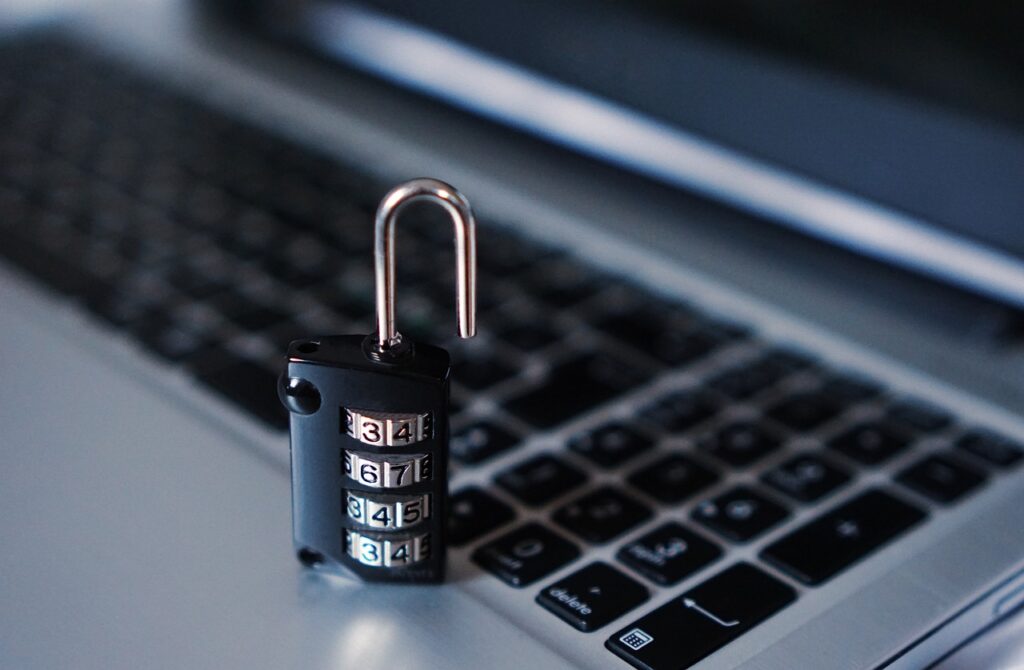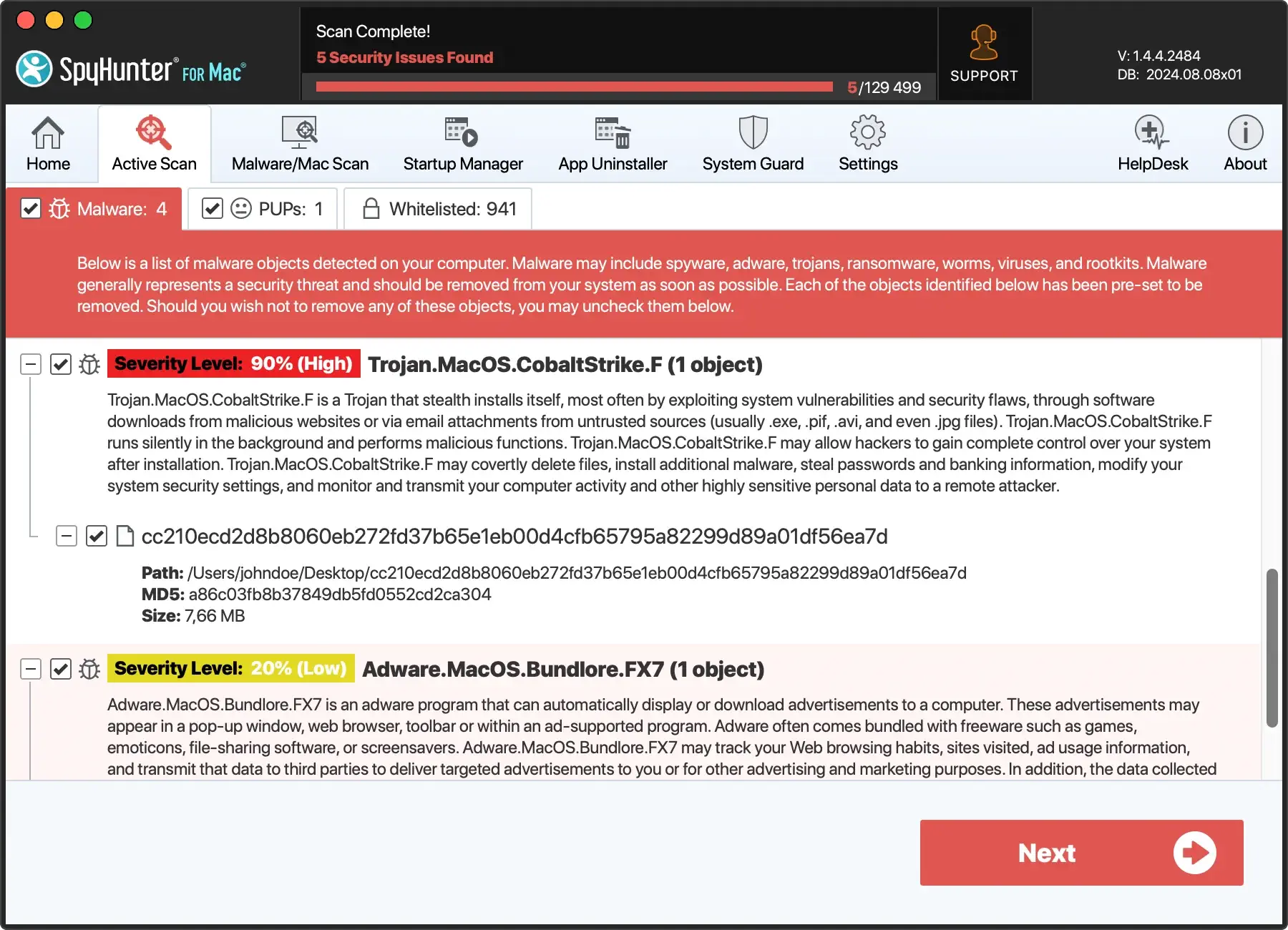What Is System Integrity Protection On Mac? (Complete Guide)
Before we dive in
Keeping your computer safe while you're online is crucial. That's why we developed SpyHunter — a tool designed to enhance your digital security.
Boost your online protection today — download SpyHunter for Mac here! We've also put together our top tips and solutions below to help you stay protected.

Have you ever wondered how your MacBook stays protected against malware and unauthorized software? A big part of the answer lies in macOS’s built-in security feature known as System Integrity Protection (SIP), introduced with OS X El Capitan back in 2015.
This critical layer of security prevents harmful applications from modifying protected files and settings, ensuring your system’s integrity remains uncompromised. Beyond safeguarding system file and folder locations, SIP plays an indispensable role from the moment your Mac boots up.
This article will provide you with insights into the origins and functionalities of SIP, equipping you with the knowledge to navigate your system’s security settings with confidence.
What is System Integrity Protection (SIP) and why does macOS use it?
At its core, System Integrity Protection (SIP) is a security feature of macOS that plays a critical role in safeguarding the system from potentially harmful software.
Introduced with OS X El Capitan, SIP aims to prevent the modification of protected files and folders by restricting the power of the root user account, a move designed to bolster the system’s defenses against malicious software.
Before SIP, the root user had unrestricted access to the system, allowing any software installed with root-level access to modify or overwrite system files and applications. This unrestricted access posed a significant security risk, as it left the system vulnerable to attacks from malicious software. SIP addresses this vulnerability by limiting what the root user can do, adding an extra layer of security.
The significance of SIP extends beyond just protecting system files and folders. It also prevents unauthorized software from selecting a startup disk, thereby defending the system’s integrity at its most crucial boot stages.

Despite its restrictions, SIP is designed to be flexible where it counts, allowing modifications to certain parts of the system by Apple-signed processes. This ensures that essential Apple software updates and system changes can proceed without hindrance, striking a balance between security and system functionality.
The origins of SIP in macOS security
The necessity for a system like SIP arose from the evolving security landscape and the inherent vulnerabilities in having unrestricted root access.
With most users operating on administrative accounts and the prevalence of weak or nonexistent passwords, the security of the entire system could be compromised by a single act of granting root access. This situation underscored the need for SIP as a fundamental step towards ensuring a high level of security on macOS platforms.
By restricting root powers, SIP becomes a critical barrier, preventing malware from making unauthorized changes to the system. It exemplifies Apple’s proactive approach to security, addressing a notable weakness in the system before it could be exploited.
SIP’s origin lies in the need to fortify macOS against potential threats, marking a significant evolution in Apple’s security strategy to protect users and their data.
Choosing to turn SIP off – security implications and advice
System Integrity Protection (SIP) is a security feature of macOS that was introduced to safeguard the system by restricting the ability to modify system files and folders.
Yet, some users may need to disable system integrity protection for various reasons, including performing system-level modifications that are not possible with SIP enabled. For example, a user may need to install system extensions that need SIP to temporarily be turned off.
Understanding the impact of SIP on your system’s performance and security, whether you use a MacBook or a desktop Mac, is crucial before making any changes.
Does disabling SIP make your Mac less secure?
Disabling SIP reduces the security of your Mac. This change in security levels brings a critical question to light: is your MacBook safe without SIP?
Initially, SIP’s design focuses on preventing potentially malicious software from modifying protected files and folders. With SIP disabled, these protections are removed, which could expose your system to risks such as malware or unauthorized modifications to system files.
However, it’s worth noting that disabling SIP isn’t an all-or-nothing issue when it comes to security. If you temporarily disable SIP to make specific changes to the system and then quickly re-enable it, the window of vulnerability is minimal.
During such operations, it’s advisable to disconnect from any networks to reduce the risk further. This approach requires a cautious attitude towards system security, understanding the risks involved, and taking immediate steps to mitigate them.
For users who choose to disable SIP to perform specific tasks, it’s crucial to weigh the necessity of these tasks against the potential security risks.
If you’re confident in your actions and aware of the implications, disabling SIP might be worth considering. However, understanding that this action could lead to vulnerabilities in your system’s security is important.
Before you start: Backup your data
Before making major changes to your Mac, such as disabling System Integrity Protection (SIP), it’s essential to back up your data. This step ensures that no important files are lost during the process.
Backing up can seem like a chore, but it’s a straightforward task that can save you from potential headaches and ensure smooth data recovery. We’ll guide you through the process to make sure your data is safe.
How to backup your Mac before disabling SIP
Backing up your Mac can be done in several ways, each with its own advantage. The most common method is using Time Machine, Apple’s built-in backup feature. It’s designed to be user-friendly and efficient, making it a great option for regular backups. Here’s a quick guide to get you started:
- Connect an external storage device: Time Machine requires an external hard drive or SSD. Make sure it’s formatted for macOS (using
Disk Utilityif needed) and connect it to your Mac. - Open Time Machine settings: Go to
System Preferences > Time Machine. Click onSelect Backup Diskand choose your external drive from the list. - Start the backup: After selecting your backup disk, Time Machine will start the backup process automatically. You can also manually start a backup by clicking
Back Up Now.
Another option is to use cloud-based services. These services offer the flexibility of accessing your files from anywhere with an internet connection. However, they may require a paid subscription for larger storage needs.
Regardless of the method you choose, make sure to verify that your backup is complete and your data is accessible from another device if necessary.
Comprehensive steps to disable SIP on macOS
Follow these steps carefully to disable SIP on your macOS safely.
Restart your Mac in Recovery Mode
Initiating Recovery Mode on your Mac varies depending on the chip it uses.
For an Apple Silicon Mac (M1 or M2) Chip, press and hold the power button until Loading startup options is displayed. Then select Options to enter Recovery Mode.
On an Intel-based Mac, restart your device and immediately hold down the Command+R keys after you hear the startup sound until the Apple logo appears, signaling the Recovery Mode is activated.
Utilize Terminal to disable SIP
Once in Recovery Mode, locate the Utilities menu at the top of the screen and open a Terminal window from the drop-down.
Type csrutil disable into the Terminal window and press the Return key. You will see a message indicating that System Integrity Protection has been disabled. Note that your machine will require a restart for the changes to take effect.
Using SpyHunter as additional protection while SIP is disabled
SIP is a security feature of macOS that was introduced to prevent potentially harmful software from modifying protected files and folders on your Mac.
The truth is, disabling SIP does render your Mac more susceptible to threats than it would be with SIP enabled. If you need to disable SIP for any specific operations you need to perform, SpyHunter can offer an additional layer of security to your Mac while SIP is turned off.
SpyHunter features an advanced real-time detection engine that can stop malware in its tracks before it can make unwanted changes to your system. The real-time scanner can give you an extra blanket of security while you work on your Mac with SIP disabled.
Download SpyHunter and follow the installation instructions on your screen. Once installed, run the application and you can familiarize yourself with the program’s interface and additional capabilities.

Those include a malware scanner and removal engine and extra functionality such as an app uninstaller, large and duplicate file detection and scheduled malware scans.
How to re-enable SIP on your Mac
Re-enabling SIP on your Mac ensures that you’re restoring Apple’s default security framework designed to keep your system safe from malware and unauthorized modifications. Typically, users should re-enable SIP once they have completed the tasks that required its deactivation.
Steps to re-enable System Integrity Protection safely
- Shut down your Mac: Begin by completely shutting down your Mac to prepare for the SIP re-enabling process.
- Restart in Recovery Mode: Power on your Mac while immediately pressing and holding
Command + Rkeys. Release these keys as soon as you see the Apple logo or a spinning globe. This action boots your Mac into Recovery Mode. - Open Terminal: Once in Recovery Mode, from the menu bar, select
Utilities > Terminal. - Enable SIP: In the Terminal window, type
csrutil enableand pressReturn. A message will confirm that SIP has been enabled. - Restart your Mac: Finally, restart your Mac normally. SIP will now be active, providing its full protection.

It’s worth noting that the reactivation of SIP won’t affect any changes that were made while it was disabled, ensuring that any necessary modifications you’ve made can still be retained.
Frequently asked questions about SIP on macOS
Can disabling SIP permanently damage your Mac?
Disabling System Integrity Protection (SIP) on your Mac comes with its risks, but it does not cause permanent damage.
SIP is a security feature that prevents potentially harmful software from modifying protected files and folders on your macOS, ensuring that malicious software cannot gain access to critical system areas. Disabling SIP means you’re removing this layer of protection, which could expose your system to threats if malicious software is inadvertently installed.
However, any issues that arise from disabling SIP can often be resolved by re-enabling it or performing a fresh install of macOS. It’s crucial to only disable SIP temporarily and for specific, necessary tasks, like installing certain drivers that require direct access to system files.
Do many apps require SIP to be disabled for installation?
The majority of applications for macOS do not require SIP to be disabled for installation and operation. Developers can design apps that work harmoniously within the secure environment provided by SIP.
The App Store and notarized apps from third-party developers are designed to work with SIP enabled. Disabling SIP is generally only necessary for applications that need to modify system-protected files or perform specific tasks at a deep system level, which most user applications do not.
Therefore, if you’re considering disabling SIP to install an app, it’s worth checking if this step is truly necessary or if there’s an updated version of the app that complies with macOS security requirements.
Final thoughts
Disabling System Integrity Protection (SIP) on your Mac is a critical decision that requires balancing flexibility with potential risks.
Before the El Capitan Mac operating system update, Mac users had no SIP to rely on, navigating their digital space with caution. SIP adds a robust layer, limiting even root users. Temporarily disabling SIP to tweak your system can be risky and akin to lifting a safety net.
Isolating your machine from networks during this process can minimize threats. SIP guards against unauthorized changes, and disabling it leaves your system vulnerable, similar to older OS X versions.
If you proceed, be cautious, as altering system files can lead to critical security breaches. Weigh the necessity of disabling SIP against the potential security trade-offs, and make informed decisions.